Understanding CFD Trading: A Deep Dive into Contracts for Difference
Welcome to a comprehensive guide designed to illuminate the often-complex world of Contracts for Difference, or CFDs. Whether you are taking your first steps into trading or seeking to deepen your technical analysis skills, understanding CFDs is fundamental if you plan to incorporate them into your trading repertoire. We’re here to break down the mechanics, explore the opportunities, and critically examine the significant risks involved. Think of us as your guide through this intricate landscape, explaining things step-by-step, just like a teacher would.
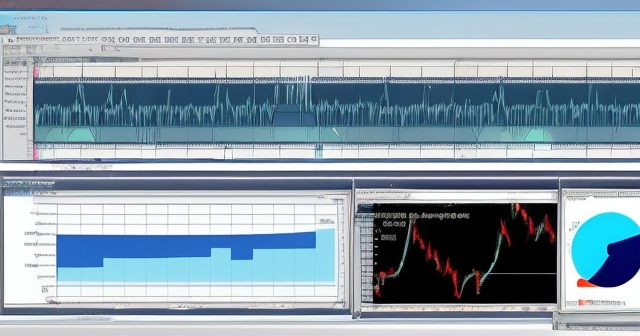
What exactly is a CFD? At its core, a CFD is a derivative contract that allows you to speculate on the price movement of a financial asset without actually owning the asset itself. Imagine you believe the price of a particular stock will rise. Instead of buying shares directly, you could open a CFD position. If the stock price increases, the CFD value increases, and you profit from the difference between the price when you opened the contract and the price when you closed it. Conversely, if the price falls, you would incur a loss.
This crucial difference – speculating on price change versus owning the asset – is what defines CFDs and gives them unique characteristics, including flexibility and complexity. We will delve into these characteristics, beginning with the most significant one: leverage.
The Engine Room: Leverage and Margin Explained in CFD Trading
One of the primary features that distinguishes CFD trading is the concept of leverage. Leverage allows you to control a large position in the market with a relatively small amount of capital upfront. This small deposit is known as the margin.
Think of margin like a security deposit on a rental car. You don’t pay the full price of the car upfront, but you put down a deposit that allows you to use it. With CFDs, the margin allows you to open a position much larger than your initial deposit would otherwise allow. If the market moves in your favour, this magnification, or leverage, can significantly amplify your potential profits. For example, with 1:20 leverage (or 5% margin), you could control a position worth $10,000 with just $500 of your own capital.
Margin requirements vary depending on the asset class you are trading and the broker you use. Major indices might require a lower margin percentage (e.g., 5%), while individual shares might require a higher percentage (e.g., 20%). It’s vital to understand that the margin is not a cost of the trade itself; it’s the capital required to open and maintain the position.
However, just as leverage can amplify profits, it can also dramatically amplify losses. This is the critical flip side of this powerful tool. If the market moves against your leveraged position, your losses can accumulate rapidly and potentially exceed your initial margin deposit. This brings us to one of the most significant risks associated with CFD trading: the margin call.
The Inherent Risks: Why CFDs Demand Caution and Understanding
Here is where we must be absolutely clear and direct: CFD trading carries a high risk of rapid money loss. This is not a possibility; it is a statistical reality for a significant percentage of retail traders.
| Risk Factors | Description |
|---|---|
| Leverage Magnifies Losses | A small adverse price movement can wipe out your initial margin. |
| Margin Calls | If losses reduce your account equity below margin level, your broker may close your position. |
| Market Volatility | Unexpected price movements can lead to severe losses. |
Data consistently shows that a high proportion of retail investor accounts (often cited around 70% to 71% or even higher by providers) lose money when trading CFDs. This isn’t meant to discourage you entirely, but rather to underscore the importance of treating CFD trading with extreme caution, thorough education, and robust risk management strategies.
- Leverage Magnifies Losses: As discussed, leverage is a double-edged sword. A small adverse price movement, magnified by leverage, can quickly wipe out your initial margin and dip into the rest of your trading capital.
- Margin Calls: If your losses on a leveraged position reduce your account equity below the required margin level to maintain the position, your broker may issue a margin call. This is a request for additional funds to bring your margin level back up. If you cannot meet the margin call, the broker may automatically close your position at a loss to prevent further losses, potentially leaving you with a significant deficit, especially if prices are moving rapidly against you.
- Market Volatility and Gaps: Financial markets can be highly volatile, with prices moving sharply and unexpectedly due to news events or economic data releases. Sometimes, prices can “gap” – jump from one price level to another without trading occurring in between. If your stop-loss order (a tool to limit losses) is placed within a gap, it may be executed at the next available price, which could be significantly worse than your requested level (this is known as slippage), leading to larger-than-expected losses.
- Holding Costs: Keeping positions open overnight often incurs holding costs (financing fees), which can accumulate and erode profitability, particularly for longer-term trades.
Understanding these risks isn’t just theoretical; it’s crucial for your financial survival in the trading world. CFDs are complex instruments, and their leveraged nature means you can lose capital very quickly.
Understanding the Costs Beyond Price Movements
While anticipating price movements is central to CFD trading, it’s equally important to understand the costs involved, as these directly impact your potential profitability. These costs are how brokers generate revenue, and ignoring them means you don’t have a clear picture of your true trading expenses.
The primary costs in CFD trading include:
| Cost Components | Description |
|---|---|
| Spread | Difference between bid price and ask price of an asset. |
| Commission | A fee for opening/closing trades, applicable mainly on individual shares. |
| Holding Costs | Also known as rollover fees, incurred for keeping a position overnight. |
Successfully navigating CFD trading requires not just predicting market direction but also accounting for these costs in your trading plan. Overlooking spreads, commissions, or holding costs can turn a potentially profitable trade into a losing one.
A World of Markets: What You Can Access with CFDs
One of the significant advantages of CFD trading is the sheer breadth of global financial markets you can access from a single trading account. CFDs allow you to speculate on the price movements of a vast array of asset classes without needing to buy or sell the underlying assets directly. This offers incredible flexibility for traders looking to diversify or capitalize on opportunities across different sectors and regions.
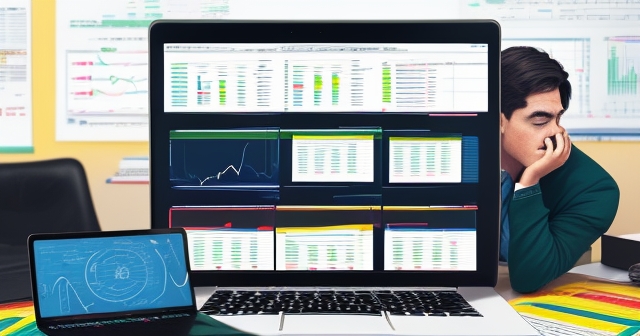
What kind of markets can you trade using CFDs?
- Forex (Foreign Exchange): This is the most liquid market globally. You can trade major, minor, and exotic currency pairs like GBP/USD, EUR/JPY, AUD/CAD, speculating on the exchange rate fluctuations between two currencies.
- Indices: Trade the performance of entire stock markets or sectors through major global indices like the FTSE 100 (UK), S&P 500 (US), DAX (Germany), Nikkei 225 (Japan), and many others.
- Shares (Equities): Access CFDs on individual stocks of publicly traded companies from around the world, such as Apple Inc., Tesla, Amazon, Google, and thousands more.
- Commodities: Speculate on the price of raw materials, including energies like Brent Crude oil and WTI oil, metals like Gold and Silver, and agricultural products like wheat or sugar.
- ETFs (Exchange Traded Funds): Trade CFDs based on the price of popular ETFs, which track baskets of assets like indices, sectors, or bonds, offering instant diversification.
- Treasuries (Bonds): Access CFDs on government bonds from various countries, such as US Treasuries or UK Gilts, allowing you to speculate on interest rate expectations.
- Cryptocurrencies: Some brokers offer CFDs on popular cryptocurrencies like Bitcoin, Ethereum, and Ripple, although these are extremely volatile and often have high margin requirements and wider spreads.
This diverse market access means you’re not limited to just one type of investment. You can trade Forex in the morning, indices in the afternoon, and commodities in the evening, seizing opportunities as they arise globally. However, remember that each market has its own drivers, volatility patterns, and trading hours. Understanding the specifics of the market you’re trading the CFD on is absolutely essential.
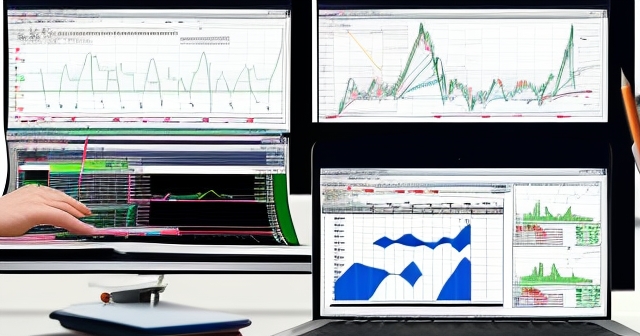
If you’re considering starting Forex trading or exploring a wide range of CFD products, Moneta Markets is a platform worth considering. Originating from Australia, it offers access to over 1000 financial instruments, catering to both novice and experienced traders alike.
Mastering Direction: The Power of Going Long vs. Going Short
Another key flexibility CFDs offer is the ability to potentially profit from both rising and falling markets. Unlike traditional stock ownership where you generally profit only if the price goes up, CFD trading allows you to take positions based on your expectation of the market’s direction, regardless of whether it’s heading up or down.
| Market Direction | Description |
|---|---|
| Going Long | Buying the contract when you expect the price to rise. |
| Going Short | Selling the contract when you expect the price to fall. |
- Going Long: When you go long on a CFD, you are essentially buying the contract. You do this when you expect the price of the underlying asset to rise. If the price increases from your opening level to your closing level, you make a profit equal to the price difference multiplied by the size of your position (minus costs). This is similar to buying a stock hoping its value increases.
- Going Short: When you go short on a CFD, you are selling the contract. You do this when you expect the price of the underlying asset to fall. If the price decreases from your opening level to your closing level, you make a profit equal to the price difference multiplied by the size of your position (minus costs). This is a way to potentially benefit from bearish market movements, something often difficult or impossible with traditional asset ownership unless you engage in complex strategies like short selling stocks directly (which often involves borrowing shares).
This ability to go long or short opens up opportunities in any market condition – bullish (prices rising) or bearish (prices falling). However, it also adds a layer of complexity, requiring you to develop strategies for identifying potential upward *and* downward price trends. This reinforces the need for thorough market analysis, whether you focus on technical indicators, chart patterns, or fundamental news drivers.
Essential Tools for Survival: Implementing Robust Risk Management
Given the inherent high risk of CFD trading, particularly due to leverage, implementing robust risk management is not optional – it is absolutely fundamental to long-term survival and potential success. Without proper risk controls, you are essentially gambling, and as the statistics on retail investor losses show, the odds are stacked against you.
Risk management involves identifying potential risks before they occur and taking steps to mitigate their impact on your trading capital. What are some of the essential tools and techniques you should master?
- Stop Loss Orders: This is arguably the most critical risk management tool. A stop loss order is an instruction to your broker to automatically close your position if the market price moves against you to a specified level. Setting a stop loss helps limit your maximum potential loss on any single trade. It’s like an emergency brake. You decide before you enter the trade how much you are willing to lose and place your stop loss accordingly. Remember the risk of slippage, where volatile market conditions can cause the stop loss to execute at a worse price than intended. Some brokers offer Guaranteed Stop Loss Orders (GSLOs) for an extra fee, which guarantee execution at the specified price, eliminating slippage risk for that specific order.
- Limit Orders (Take Profit Orders): While stop losses protect against losses, limit orders are used to lock in profits. A limit order is an instruction to close your position automatically if the market price reaches a specified level in your favour. This helps ensure you don’t miss out on a target profit level, especially if you’re unable to monitor the market constantly.
- Position Sizing: This involves calculating the appropriate size of your trade based on your total capital, the stop loss level you’ve set, and the amount of capital you are willing to risk on that specific trade. A common rule of thumb is to risk only a very small percentage (e.g., 1% to 2%) of your total trading capital on any single trade. Proper position sizing ensures that even if you hit your stop loss, the resulting loss is manageable and doesn’t severely deplete your account.
- Diversification: While CFDs allow you to trade a vast range of markets, it’s prudent not to put all your capital into one single market or asset class. Diversifying across different instruments or markets can help spread your risk. However, be mindful that in times of global market stress, correlations between different assets can increase.
- Risk-Reward Ratio: Before entering a trade, calculate the potential profit (distance to your take profit level) versus the potential loss (distance to your stop loss level). A favourable risk-reward ratio (e.g., 1:2 or 1:3, meaning you stand to gain 2 or 3 times what you risk) is crucial for profitability over the long term, even if you don’t win every trade.
Implementing these tools consistently, on every single trade, is paramount. Risk management is not just about avoiding big losses; it’s about preserving your capital so you can continue trading and capitalize on future opportunities. It requires discipline and a clear trading plan.
Starting Your Learning Journey: Resources, Practice, and CFD Trading Courses
Given the complexity and high risk of CFDs, attempting to trade them without proper education is highly discouraged. It’s like trying to fly a plane without taking flying lessons – the outcome is unlikely to be positive. Fortunately, numerous resources are available to help you understand CFDs and practice trading in a safe environment.
Many brokers and financial education providers offer extensive learning materials. What should you look for?
- Comprehensive Trading Guides: Detailed articles or e-books explaining the basics of CFDs, leverage, margin, costs, order types, and risk management.
- Webinars and Videos: Live or recorded sessions covering various trading topics, from introductory concepts to specific strategies and market analysis techniques.
- Trading Glossaries/Dictionaries: Essential for understanding the terminology used in the financial markets and CFD trading.
- Structured CFD Trading Courses: Some providers offer more formalized courses that build your knowledge step-by-step, covering everything from the definition of a CFD to developing a trading plan and implementing advanced strategies. These can be invaluable for gaining a solid foundation.
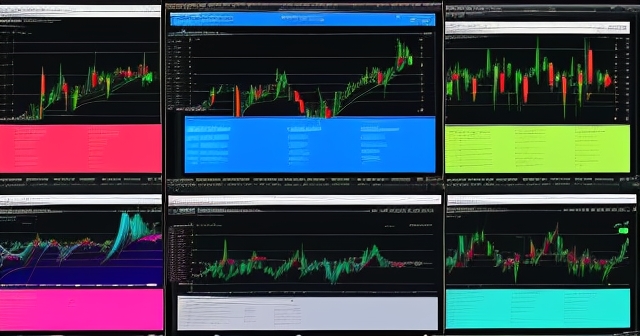
Beyond theoretical learning, practical experience is crucial. This is where a demo account becomes your best friend. A demo account is a simulated trading environment funded with virtual money. It allows you to trade live market prices using a broker’s platform without risking your own capital. What are the benefits of using a demo account?
- Platform Familiarity: You can navigate the trading platform, learn how to open and close trades, place orders (including stop losses and limits), and use charting tools without fear of making costly errors.
- Strategy Testing: You can practice implementing trading strategies you’ve learned, observing how they perform in real market conditions.
- Risk Management Practice: Crucially, you can practice setting stop losses, calculating position sizes, and seeing the impact of leverage on your virtual balance. This helps build the discipline needed for live trading.
- Market Understanding: Get a feel for how different markets move and react to news events.
We cannot overstate the importance of starting with a demo account. Spend sufficient time practicing until you are fully comfortable with the platform, understand how leverage impacts your positions, and can consistently apply your risk management rules. Think of it as your training ground before entering the actual arena.
Choosing Your Trading Platform: Technology Meets Trading
Your trading platform is your primary interface with the markets. It’s the software or application you use to view prices, conduct analysis, place trades, and manage your positions. The quality and features of the platform can significantly impact your trading experience and execution. What should you consider when choosing a CFD trading platform?
- Reliability and Speed: The platform needs to be stable and execute trades quickly, especially in fast-moving markets. Slippage isn’t just about price gaps; it can also occur due to slow order execution.
- Availability: Does the broker offer a web-based platform (accessible from any browser), a downloadable desktop platform (often more robust), and mobile apps (for trading on the go)?
- Charting Tools and Indicators: Does the platform provide advanced charting capabilities, multiple chart types (candlestick, bar, line), technical indicators (moving averages, RSI, MACD), and drawing tools (trend lines, Fibonacci retracements) for analysis?
- Order Types: Beyond basic market orders, does it support pending orders like limit orders and stop orders, as well as more advanced types like OCO (One Cancels the Other) or trailing stops?
- News and Analysis: Does the platform integrate live news feeds, economic calendars, and analytical tools to help you stay informed and make trading decisions?
- Third-Party Integrations: Some brokers support popular external platforms like MetaTrader 4 (MT4), MetaTrader 5 (MT5), or TradingView, which are favoured by many traders for their charting capabilities and automated trading (Expert Advisors).
The platform should align with your trading style and needs. A beginner might prioritize ease of use and educational resources, while a more experienced trader might look for advanced charting, execution speed, and support for automated strategies.
When you’re looking for a trading platform that combines flexibility with technical advantages, Moneta Markets is certainly worth mentioning. It offers support for mainstream platforms like MT4, MT5, and their proprietary Pro Trader platform, integrating high-speed execution with competitive spread settings to provide a strong trading experience.
Developing Your Trading Strategy: A Blueprint for Action
Trading without a strategy is like setting sail without a map. A trading strategy is a comprehensive plan that outlines what you will trade, when you will enter a position, when you will exit a position (whether for profit or loss), and how you will manage your risk. Developing and sticking to a well-defined strategy is a hallmark of disciplined trading.
| Strategy Components | Description |
|---|---|
| Market Selection | Which markets or asset classes will you focus on? |
| Analysis Method | Will you use technical or fundamental analysis, or both? |
| Entry Signals | What conditions must be met to enter a trade? |
| Exit Signals | Where will you place your stop loss and take profit orders? |
There are countless types of trading strategies, ranging from short-term approaches like Day Trading (opening and closing positions within the same trading day) and Scalping (attempting to profit from tiny price movements over very short periods) to longer-term strategies like Swing Trading (holding positions for days or weeks to capture larger swings) and Position Trading (holding positions for weeks, months, or even years based on major trends). The strategy you choose should align with your personality, available time, and risk tolerance. Remember to test your strategy, ideally using a demo account or through backtesting (applying the strategy to historical data) before committing real capital.
Avoiding Common Pitfalls: Navigating the Psychological Landscape
Trading successfully involves more than just understanding mechanics and strategies; it also requires managing your own psychology. Emotions like fear and greed can be powerful forces that lead to poor decision-making. Being aware of common pitfalls can help you avoid them.
- Over-Leveraging: Using excessively high leverage increases the risk of a margin call and rapid capital depletion. Just because high leverage is available doesn’t mean you should use it to its maximum.
- Trading Without a Plan: Entering trades impulsively based on emotion or tips without a pre-defined strategy for entry, exit, and risk management.
- Emotional Trading: Letting fear prevent you from taking a valid trade or causing you to close a profitable trade too early. Letting greed keep you in a losing trade too long hoping it will turn around, or holding a profitable trade too long hoping for even bigger gains, only to see profits evaporate.
- Revenge Trading: After a losing trade, immediately entering another trade, often with larger size, in an attempt to quickly recoup losses. This is almost always a recipe for further, larger losses.
- Not Using Stop Losses: Failing to set a stop loss, or moving a stop loss further away as a trade moves against you, in the hope that the market will reverse. This can lead to catastrophic losses.
- Ignoring Costs: Underestimating the impact of spreads, commissions, and holding costs on overall profitability, especially for frequent or long-term trades.
- Insufficient Capital: Starting with too little capital can make it difficult to implement proper risk management and position sizing, as even small losses become a significant percentage of your account.
Developing a disciplined mindset, sticking to your trading plan, and managing your emotions are just as important as understanding market analysis. Regularly reviewing your trading journal can provide valuable insights into your decision-making patterns and help you identify and correct emotional biases.
Conclusion: Approaching CFD Trading Responsibly
As we conclude this deep dive, it should be clear that CFD trading offers significant flexibility and access to a wide range of global markets, presenting opportunities to potentially profit from both rising and falling prices through the use of leverage. The ability to control a large position with a relatively small margin requirement is attractive.
However, the complexity and high risk inherent in CFD trading, primarily driven by leverage, cannot be overstated. The statistics are a stark reminder: a large percentage of retail traders do lose money. The potential for rapid and significant losses, including the risk of margin calls, is a reality you must fully understand and respect.
Approaching CFD trading responsibly means prioritizing education and risk management above all else. It means:
- Taking the time to thoroughly understand how CFDs work, including the mechanics of leverage and margin, and all associated costs.
- Accepting that losses are a part of trading and knowing how to limit them using tools like stop loss orders and proper position sizing.
- Developing a clear, written trading plan and sticking to it, avoiding emotional decisions.
- Utilizing educational resources, including CFD trading courses, guides, and webinars, to build your knowledge base.
- Spending ample time practicing on a demo account to gain experience and confidence in a risk-free environment before risking real capital.
CFDs can be a powerful tool for speculating on financial markets, but they are sophisticated instruments suitable only for experienced traders who understand and are willing to accept the high level of risk involved. By focusing on continuous learning, disciplined risk management, and patient practice, you can significantly improve your chances of navigating the challenges and potentially participating in the opportunities that CFD markets offer.
cfd trading courseFAQ
Q:What is the main purpose of a CFD?
A:CFDs allow traders to speculate on price movements without owning the underlying asset.
Q:How does leverage work in CFD trading?
A:Leverage enables traders to control larger positions with a small amount of capital; however, it also increases the risk of significant losses.
Q:What essential tools should be used for risk management in CFD trading?
A:Key tools include stop loss orders, limit orders, position sizing, and maintaining a favorable risk-reward ratio.
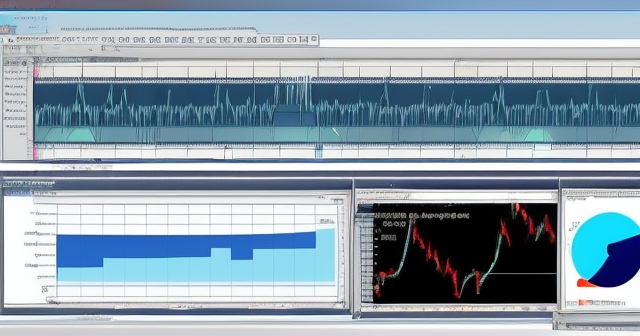
留言